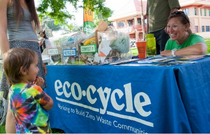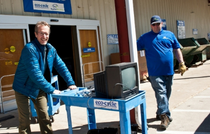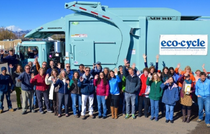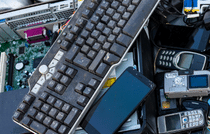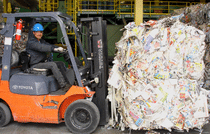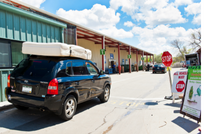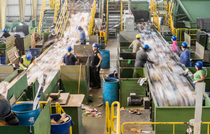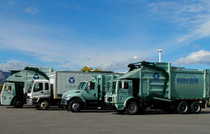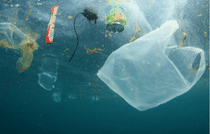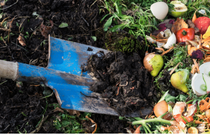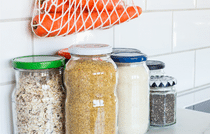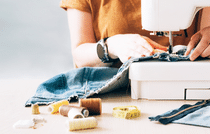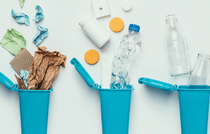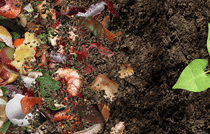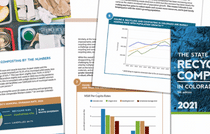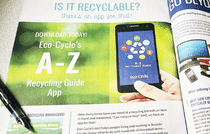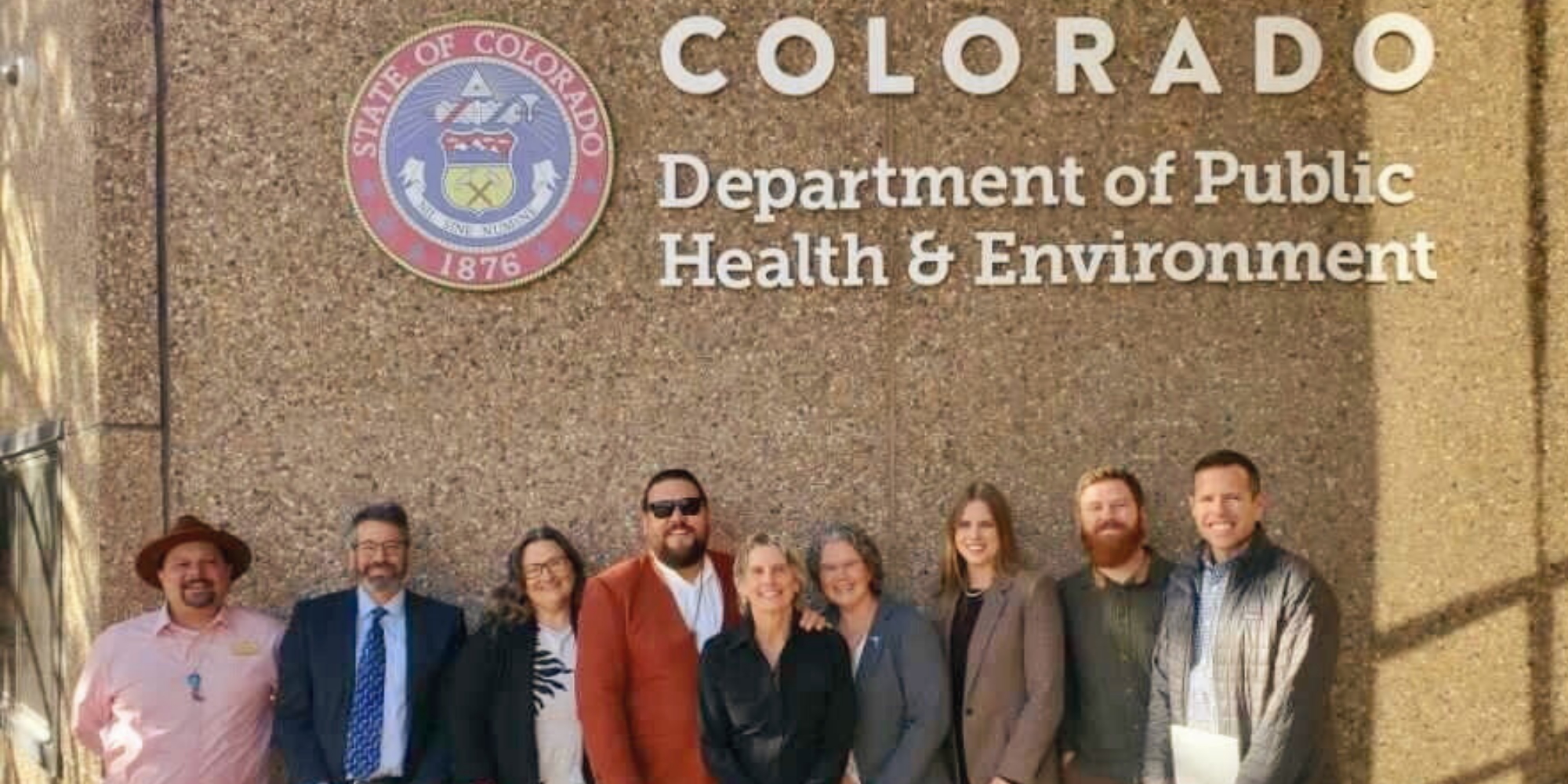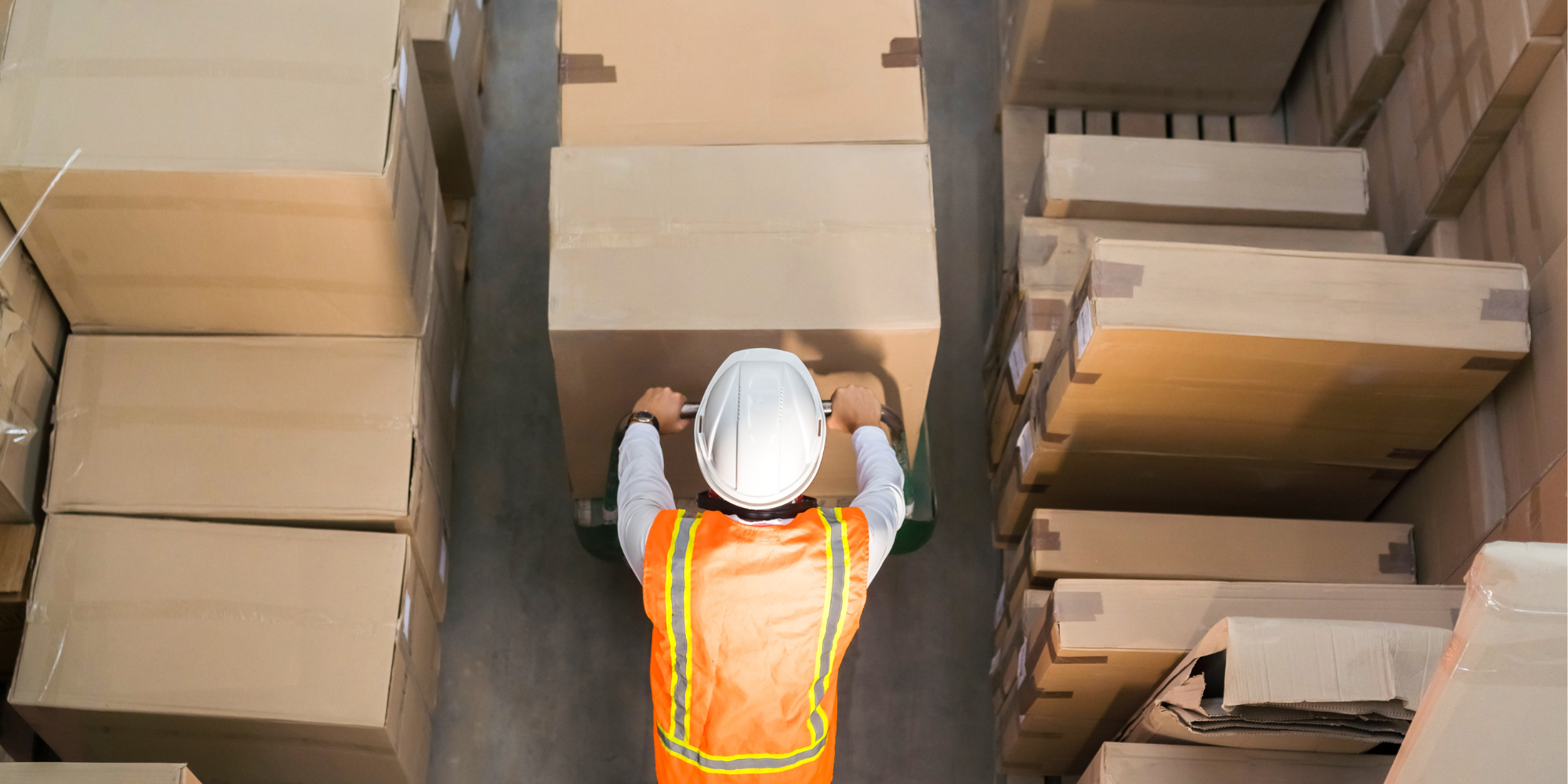Reducing Our Dependence on Plastics
Take a moment to look around your home and you’ll find evidence of the global surge in plastic production everywhere—from the food packaging in your fridge, to the liquid soap by the sink, to the bag your dog’s treats came in—it’s all likely made of plastic.
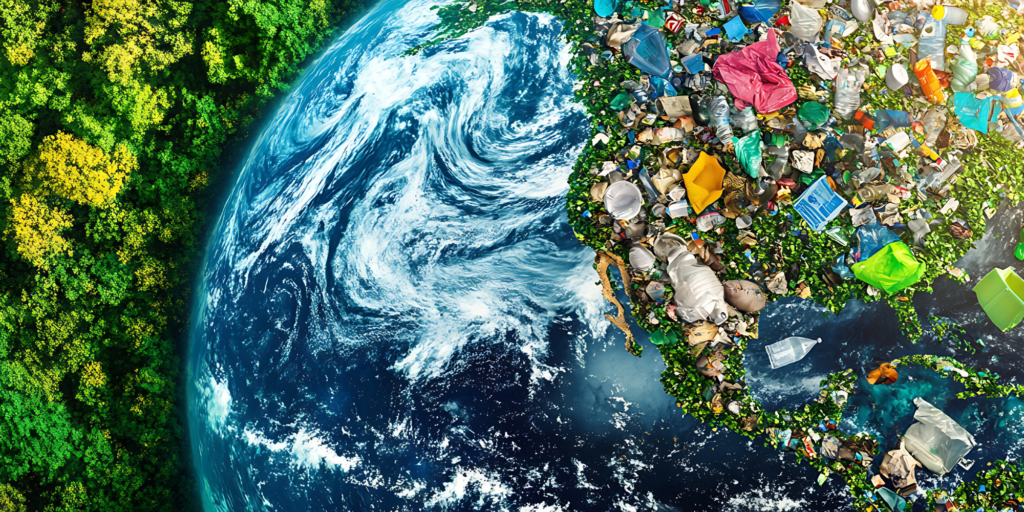
Lightweight, durable, and inexpensive, plastics have made innovations in medicine, transportation, and food preservation possible. But in solving some problems, plastics have created others, becoming embedded in nearly every ecosystem on Earth—even our own bodies.
Every year, over 400 million tons of plastic is produced, with two-thirds of it being used once and then discarded. Plastic does not decompose and disappear. It breaks down into smaller and smaller pieces, eventually becoming microplastics. These fragments are now found in oceans and rivers, in the soil that grows our food, and even in the human body. It’s estimated that we inhale about 5 grams of microplastics each week—the size of a credit card.
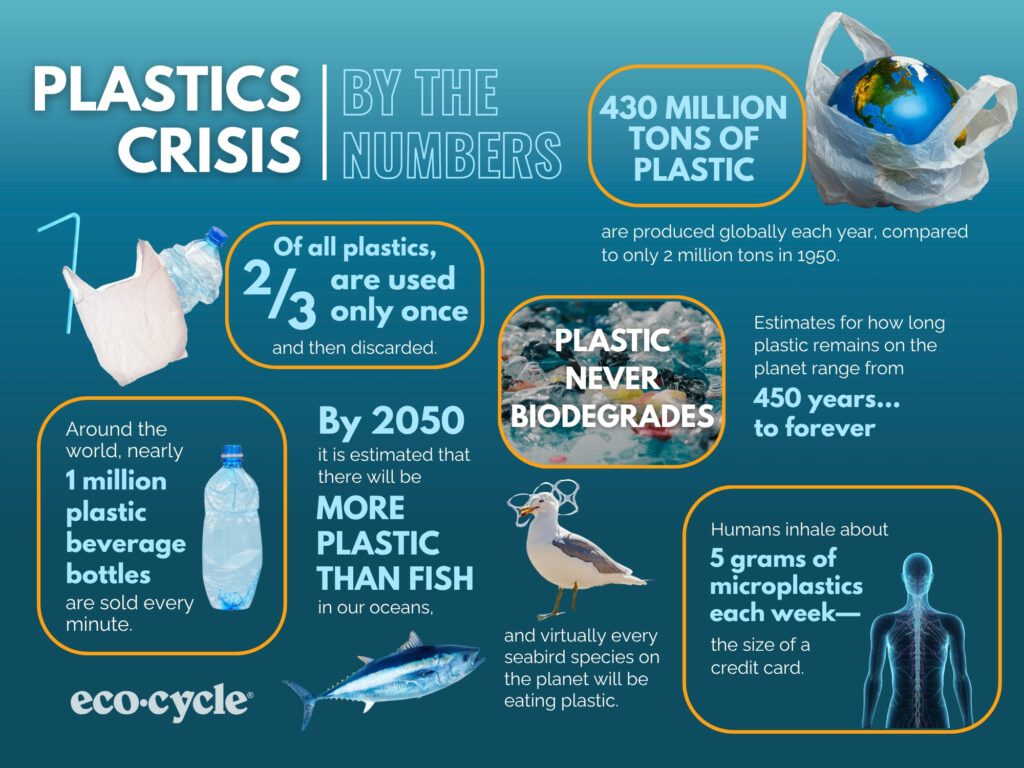
Not only do plastics cause health and environmental problems, the production and disposal of plastics also disproportionately affects Black, Indigenous, and People of Color. Communities located near petrochemical facilities—where plastics are made—are exposed to health hazards that include an increased risk of asthma, metabolic diseases, obesity, diabetes, infertility, and cancer. A petrochemical and plastics processing hub in Louisiana known as “Cancer Alley” has been called by the United Nations a glaring example of environmental racism stemming from the plastics industry.
Start at Home: Simple Tools to Reduce Your Plastic Use
While our consumer choices can’t solve the plastics crisis alone, they do make a difference and can help pave the way toward larger systemic change. Are you looking to reduce your plastic use, but aren’t sure where to start? The first step is simply paying attention to the plastics we bring into our homes, and reimagining how we can live without them. To help you reduce your own plastic use, we created:
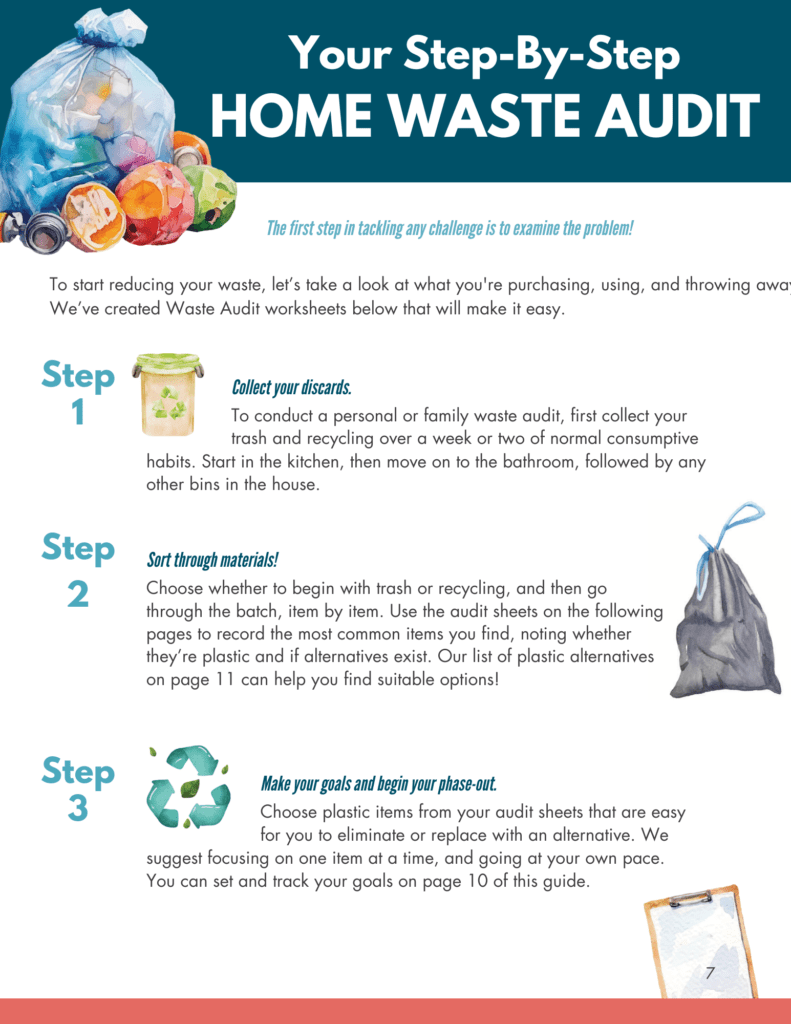
A Plastics Audit Toolkit. Over the course of a week, collect all your single-use plastics in one place. Take note of what you’re using most—and where change might be easiest.
A Plastics “Swap” Chart. Find simple ways to swap out plastic for more sustainable packaging, such as glass or aluminum—or, best of all, skip the packaging entirely by bringing your own reusables! Not every swap will be practical for every household, but even with one or two consistent changes, you can keep hundreds of plastic items out of the landfill or the environment each year.
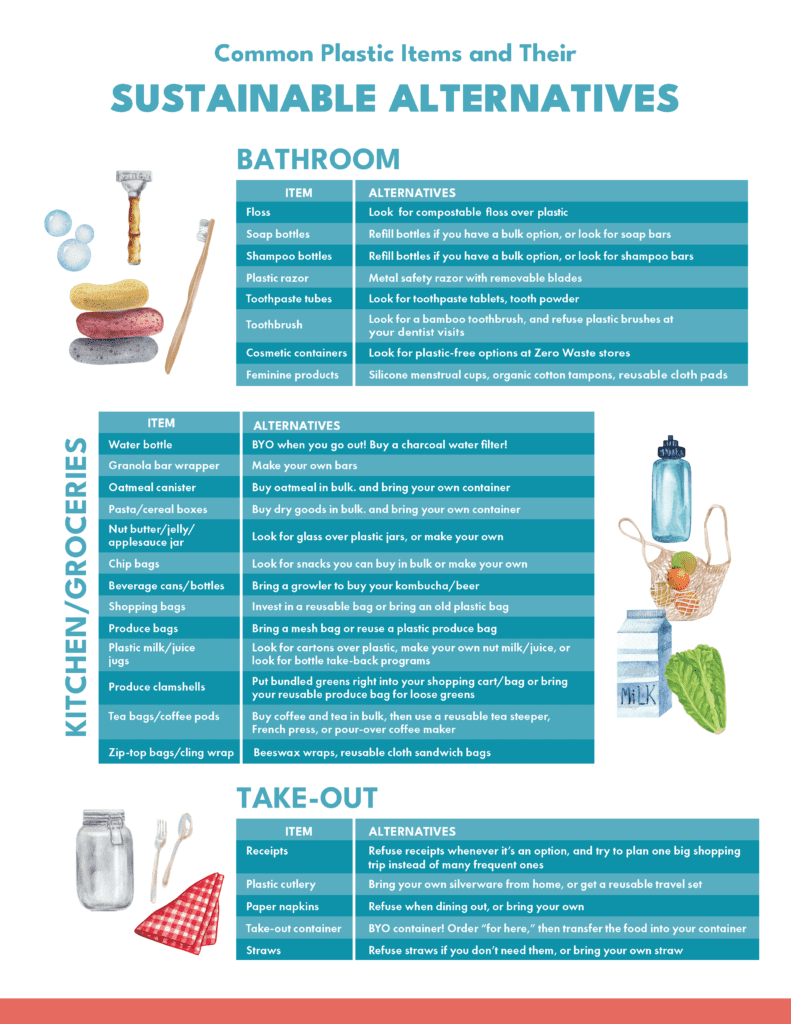
See Reducing Waste Starts at Home for more tips on how to cut your waste in the kitchen, bathroom, laundry room, and on the go.
Systemic Change Is the Only Way Out of the Plastics Crisis
However, we can’t “swap” our way out of a problem this large. Plastic waste is a structural issue. For decades, the plastics industry has produced more and more packaging, knowing that most of it was not designed to be recyclable. It’s a system designed for disposability, and requires systemic change. That’s where policy becomes essential—and fortunately, it’s already taking shape. Here in Colorado, we are moving toward a less plastic-dependent future, starting with two landmark laws:
- The Plastic Pollution Reduction Act, championed by Eco-Cycle in 2021, is phasing out single-use plastic bags and polystyrene foam (aka “Styrofoam”) containers statewide, helping reduce the sheer volume of plastics entering our waste stream.
- The Producer Responsibility for Recycling law, championed by Eco-Cycle in 2022, is shifting the responsibility for managing packaging disposal back to the companies that create it—not only making recycling free and accessible for all Coloradans, but also creating incentives for companies to reduce plastic at the source.
These laws—and others being introduced across the country—shift the burden of addressing plastic pollution off consumers and onto the companies that produce these wasteful products, where it belongs.
Building a Plastic-Free Future
The global scale of plastic pollution may feel overwhelming, but there’s a lot we can do—and a lot of meaningful action already underway. The plastics crisis didn’t start with individual choices, and it won’t be solved by them alone. But when informed and engaged, individuals take action together, they can transform communities and drive the systemic change needed to reimagine entire systems.
